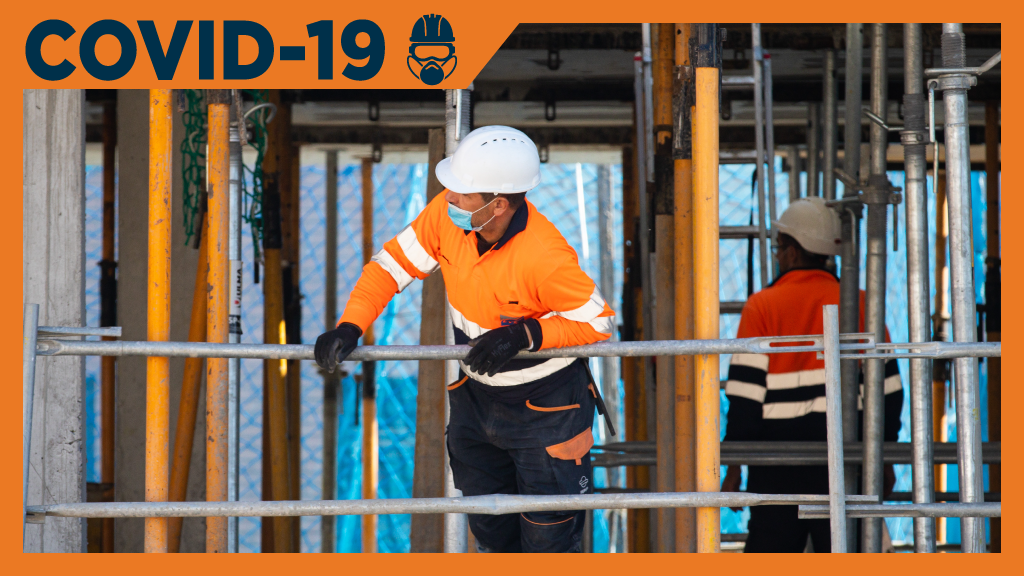This is the first of a two-part series examining the construction industry’s reaction to the Ontario government’s May 14 announcement to lift the essential construction restrictions that were imposed during the COVID-19 pandemic and allow the resumption in all sectors starting May 19. This article delves into how industry stakeholders view the resumption of work in the ICI sector specifically and what it could mean for the future.
As work on construction projects picks up across the province, there is a new normal onsite where the health and safety of workers is more important than ever, say stakeholders, and diligence is key.
“Leadership on all sides of the table have all been talking about moving forward, not starting the industry back up and going back to where we were eight weeks ago,” said Patrick Dillon, business manager for the Provincial Building and Construction Trades Council of Ontario when asked about news the sector was officially reopening on May 19. “There is a new norm taking place in construction as it relates to health and safety. The guidelines are out there and the employer community are in large part meeting those guidelines. The Ministry of Labour is backing them up by being out there enforcing the guidelines. All that is positive for construction workers in the province and for the industry.”
Initially, Premier Doug Ford announced in late March that much of the construction sector was considered essential, such as projects associated with health care, transportation and transit, as was “construction work and services, including demolition services, in the industrial, commercial, institutional and residential sectors.”
In early April, prompted by complaints of unsanitary and unsafe conditions on jobsites, the province pared back the list continuing to permit work associated with the health care sector and on transit and transportation projects and allowing work on some residential projects along with other limited categories.
Over the past six weeks, the government has slowly added to the list of permitted projects, eventually opening it up completely.
The health and safety performance in the construction industry that was allowed to remain open was really incredible
— Ian Cunningham
Council of Ontario Construction Associations
“It will take a little bit of time to phase this stuff in, for people to get comfortable with it. We don’t want to get over comfortable, because if we start getting infections in the workplace the ball game changes quickly,” added Dillon. “We’ve all got to be diligent to make sure that doesn’t happen. With the co-operation of management, labour and the government we will be able to get the industry back up to full tilt.”
In terms of infections of the active construction workforce, there was about 12 or 15 in the province, Dillon reported.
“That’s 12 or 15 people too many, but I think a lot of people’s expectation is that it could have been a lot higher,” he said. “The track record for construction has been terrific. That should give workers who are contemplating coming back now some confidence to come back into the workforce.”
John Mollenhauer, president and CEO of the Toronto Construction Association, also commended the industry for its efforts. He said while the news tends to focus on sites that have not followed health and safety protocols, hundreds of sites do.
“I think the industry in Ontario, in particular, to its credit, has been great at sharing best practices with each other for the greater good of the industry. We’re doing the same with the new information that arises because of COVID,” Mollenhauer noted.
Karen Renkema, vice-president, Ontario, with the Progressive Contractors Association of Canada, said the past eight weeks have shown the industry is able to “quickly pivot and find ways to work in this new environment, find new processes and protocols and think outside the box on things that can be done.
“The genius of this whole phased-in approach that happened, whether it was intentional or not, it has allowed contractors to be able to implement and fine tune those processes on sites that were already declared essential, so they’re just going to expand those protocols to new sites. It’s replicating what is there.”
Ian Cunningham, president of the Council of Ontario Construction Associations, echoed her comments, but added some additional measures may be needed to protect workers in the future.
“The health and safety performance in the construction industry that was allowed to remain open was really incredible,” he explained.
“As the economy begins to open up even further and the construction industry is back 100 per cent, I think it is really important that there continues to be lots of testing and enhanced contact tracing measures so that any outbreak can be managed. The Ministry of Labour will have to continue with its compliance assistance and enforcement to make sure these new measures are well understood and embraced on every construction site.”
Ontario General Contractors Association president Clive Thurston said the move to reopen the sector completely is a step in the right direction for the economy, contractors and workers.
“The ICI construction industry is ready to go back to work safely,” commented Thurston. “The leadership of Premier Doug Ford, Minister Monte McNaughton and Minister Victor Fedeli was instrumental in ensuring the safety of workers in the ICI sector. Their engagement with the industry on COVID-19-related issues shows this government’s continued commitment to rebuilding the economy and a willingness to work with the construction industry.”
Follow the author on Twitter @DCN_Angela.











Recent Comments
comments for this post are closed